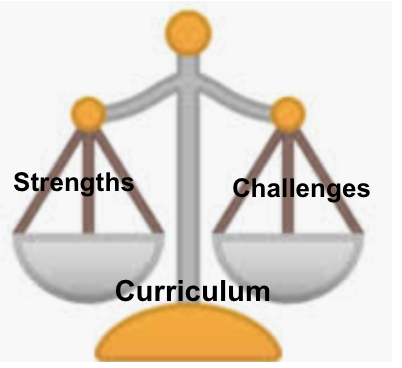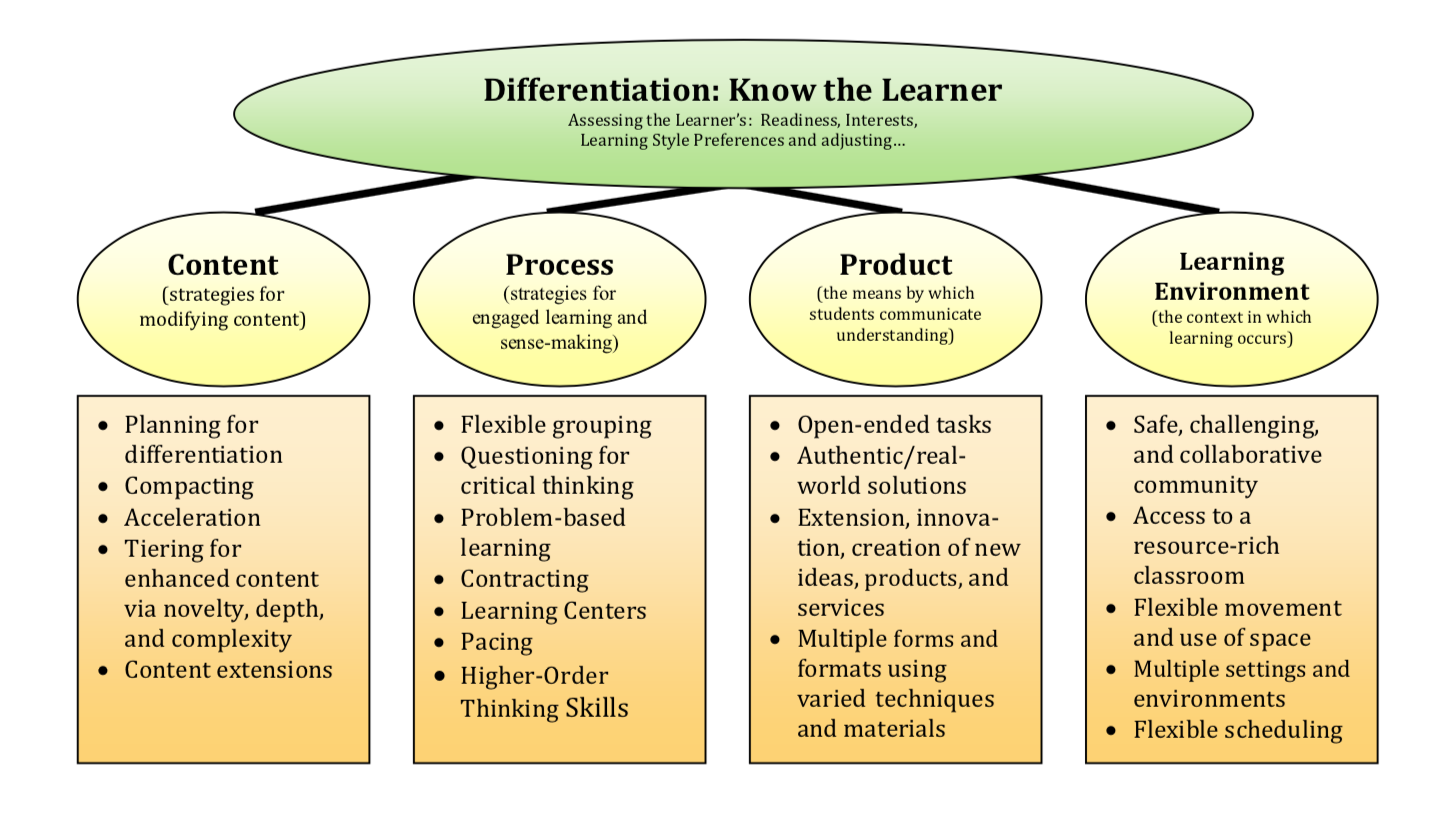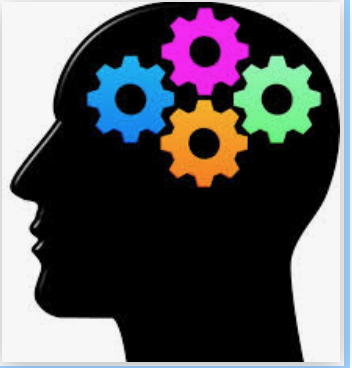We will go into some strategies specific to nurturing their giftedness and some big ideas around supporting their disabilities (more on that in part 2 of the course). A crucial concept, however, is "dual differentiation" which is discussed below.
Dual Differentiation

Dual differentiation refers to meeting the needs of students who exhibit two contradictory sets of learning characteristics by creating a balance between nurturing strengths and accommodating or offering other supports for learning deficits. As we structure these balanced learning experiences, we must remember the complexity of 2e students and consider their unique mix of advanced abilities and academic limitations.
DUAL DIFFERENTIATION IS PARALLEL, NOT INTERSECTING, SUPPORT


This concept of dual differentiation relates to what you learned about strength-based programming: we don't use strengths as a carrot while working on challenges; instead we prioritize nurturing strengths through rigorous curriculum and instruction while providing support for students' challenges that result from their disabilities. Research supports this approach--2e students thrive in a learning environment where their giftedness is recognized and nurtured first, not their disability. As national expert on twice-exceptional students, Susan Baum, has repeatedly said, 2e children aren’t broken; they just need support while also having their strengths developed.
Why Dual Differentiation?
-
Remediation techniques often lack the very characteristics gifted students require for successful learning (such as a faster learning pace and higher-order thinking tasks).
-
Curriculum is often a secret language arts lesson. Emphasis on basic skills in reading, writing, and math are applied to all content areas such as science.
-
First-hand inquiry is exception, not the rule, when programming for disabilities.
-
2e students need opportunities to interact with peers with similar strengths and interests
Fundamentals of Differentiation
Finally, whether we are differentiating for the strengths or challenges of our 2e learners, it is important to keep in mind the fundamentals of differentiation for our gifted learners for both their strengths and challenges.

Carol Ann Tomlinson created this chart on differentiation illustrates the process of differentiation. This chart applies to all students, and plays a particular role for our 2e learners--they need differentiation to thrive. Not only are content, process, and product important to the student--affect and learning environment are also key components.
It is also important to remember that brain research shows that to really learn and grow, the brain needs rigor, relevance, and relationships. As Eric Jensen says: “If the brain’s not buying; the brain’s not changing.” (For more brain-based educational ideas, see Jensen's website HERE.)
